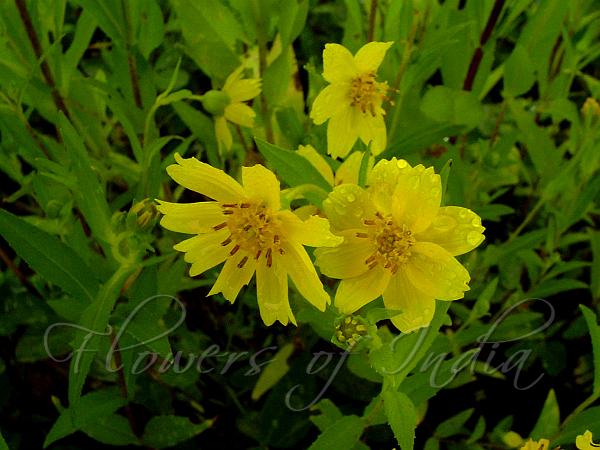|
| Ramtil |
|

|

| File size | 257372 |
| Original date | 9/23/06 12:10 PM |
| Resolution | 1578 x 1038 |
| Flash | Flash did not fire |
| Focal length | 6.3mm |
| Exposure time | 1/250s |
| Aperture | 5.0 |
| Focus Distance | |
| Metering Mode | Spot |
| Camera make | SONY |
| Camera model | DSC-P52 |
| Sensor type |
|
|
|
|
Photo: |
Botanical name: Guizotia abyssinica Family: Asteraceae (Sunflower family)
Synonyms: Guizotia oleifera, Polymnia abyssinica, Anthemis mysorensis
Synonyms: Guizotia oleifera, Polymnia abyssinica, Anthemis mysorensis
Ramtil is an erect, stout, branched annual herb, grown for its edible oil
and seed. Its cultivation originated in the Ethiopian highlands, and has
spread to other parts of the world. The seed, technically a fruit called
an achene, is often sold as bird feed. The leaves are arranged on opposite
sides of the stem. At the top of the stem leaves are arranged in an
alternate fashion. Leaves are 10-20 cm long and 3-5 cm wide. The leaf
margin morphology varies from pointed to smooth and leaf colour varies
from light green to dark green, the leaf surface is smooth.
Ramtil flower is yellow and, rarely, slightly green. The heads are 1.5-5
cm in diameter with 0.5-2 cm long ray florets. Two to three flower-heads
grow together, each having ray and disk florets. The receptacle has a
semi-spherical shape and is 1-2 cm in diameter and 0.5-0.8 cm high. The
receptacle is surrounded by two rows of involucral bracts. The head
consists of six to eight "petals" (fertile female ray florets). The disk
florets, usually 40-60 per flower-head, are arranged in three whorls. The
disk florets are yellow to orange with yellow anthers, and a densely hairy
stigma.
| Identification credit: Prashant Awale | Photographed at Satara, Maharashtra. |
• Is this flower misidentified? If yes,